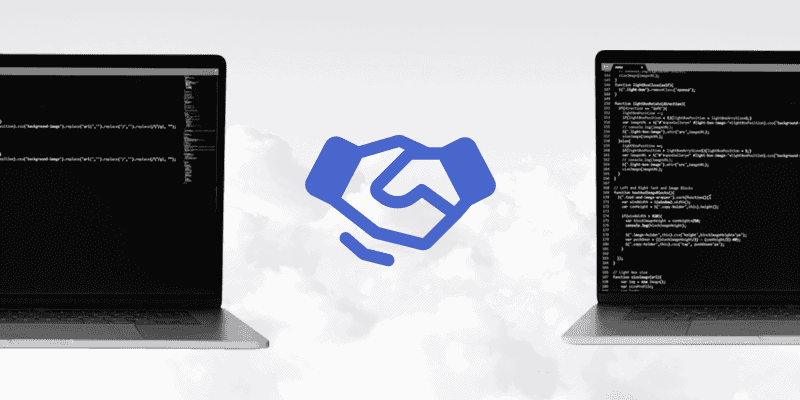Understanding that data security threats can come from both inside and outside your Salesforce DevOps pipeline is the first step toward implementing a Zero Trust approach to protecting your environment.
Why It Matters: Whether malicious or not, internal vulnerabilities challenge data security just as much as external threats like cybercriminals. It’s important for organizations to rely on verifying proper adherence to internal policies as opposed to trust when securing Salesforce release management.
- The average data breach costs companies $4.45 million in 2023.
- About 75% of data loss is triggered by human error.

Here are 8 things you need to know about implementing Zero Trust in Salesforce release management:
1. Emphasize Caution through Zero Trust
Simply taking the time to pay close attention to your Salesforce environment will help improve data security. We’d like to trust our employees to take care of their own devices, connections, and interactions with the Internet but that isn’t adhering to Zero Trust.
Extreme caution through constant verification of who is accessing your environment, how they are doing it, and why they need certain datasets is known as Zero Trust.
A Zero Trust approach provides the support and infrastructure needed to consistently address data security threats from both inside and outside your organization.
2. Understand Your Salesforce Data

The first thing you should do when deciding to apply a Zero Trust approach to Salesforce release management is to understand exactly what you have to protect. This includes taking stock of all the various types of data housed in your Salesforce environment.
Analyze the applications connected to your environment, any sensitive data, critical metadata relationships, and anything else that needs to be protected.
These insights will help your team maintain visibility over your data and enhance your ability to spot potential breaches.
3. Utilize User Access Controls
Team members should only be able to access the data they need to perform their duties. Developers don’t need to be able to see release notes, for instance. Overly permissive settings make accidental deletions an inevitability.
Multifactor authentication and role-based access permissions reduce your attack surface and make it less likely a simple error could turn into a massive data exposure.
Controlling who can access your system—whether this means dictating which parts of your system can be viewed by particular team members or protecting the system at large from unauthorized access—is a critical aspect of Zero Trust.
4. Encrypt Critical Data
Zero Trust includes applying standard data security best practices alongside more specific methods of protecting data. This calls for encrypting sensitive, critical, or otherwise protected datasets.
Encrypt sensitive data and only provide the key to team members who need this data to perform their daily tasks.
A team member who is looking through a folder they shouldn’t be—or a cybercriminal—won’t be able to expose or corrupt this sensitive data even if other layers of security fail.

5. Monitor for Anomalies
Accidental deletions and data breaches aren’t always immediately apparent. Often, these circumstances can exist in the background for extended periods of time while expanding the negative impacts. It’s critical to find any misfires or breaches as early as possible.
Use automated scanning tools to look for unauthorized access, suspicious exports, or any other kind of behavior that sets off red flags for further investigation.
Automated scanners are a critical part of a complete Salesforce release management strategy.
6. Perform Regular Updates
There is a constant flow of new updates and applications coming to market with an increased focus on security. And for legacy applications, these updates often directly address found vulnerabilities.
Keep your Salesforce environment and any connected applications up-to-date with the latest security patches to avoid unnecessary vulnerabilities.
Think of this like preventative maintenance. A seemingly innocent delay can lead to massive outages and losses.
7. Provide Continuous Training
Zero Trust stresses the importance of verifying proper processes, but you can also give your team the best chance at passing these verifications by providing everything they need to succeed. This includes incorporating updated best practices and security tactics.
Give your team frequent training sessions on Zero Trust concepts and approaches as well as the reasoning behind implementing these changes.
Ample information reduces confusion and ensures everyone is on the same page for security in Salesforce release management.
8. Conduct Frequent Audits

As we said earlier, threats are always evolving. It’s important to verify that your data security approach is still working in the way you intended.
Conduct regular assessments of the stability of your security strategy through penetration testing to find and fix any vulnerabilities in your Salesforce environment.
Any vulnerabilities identified in these audits need to be addressed immediately. Zero Trust is based on the idea of thoroughly covering your bases, and this needs to apply to every aspect of your security strategy.
Next Step…
Security in Salesforce release management can be tricky. There are a lot of moving parts and a lot of team members to keep an eye on. The good news is there are a series of DevOps tools that can help you keep everything straight.
Check out our blog, 10 Advancements for Automated Release Management in 2023, to learn more.
